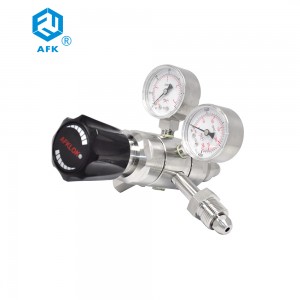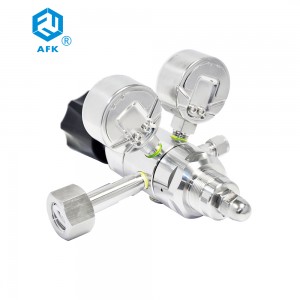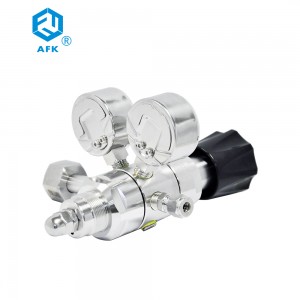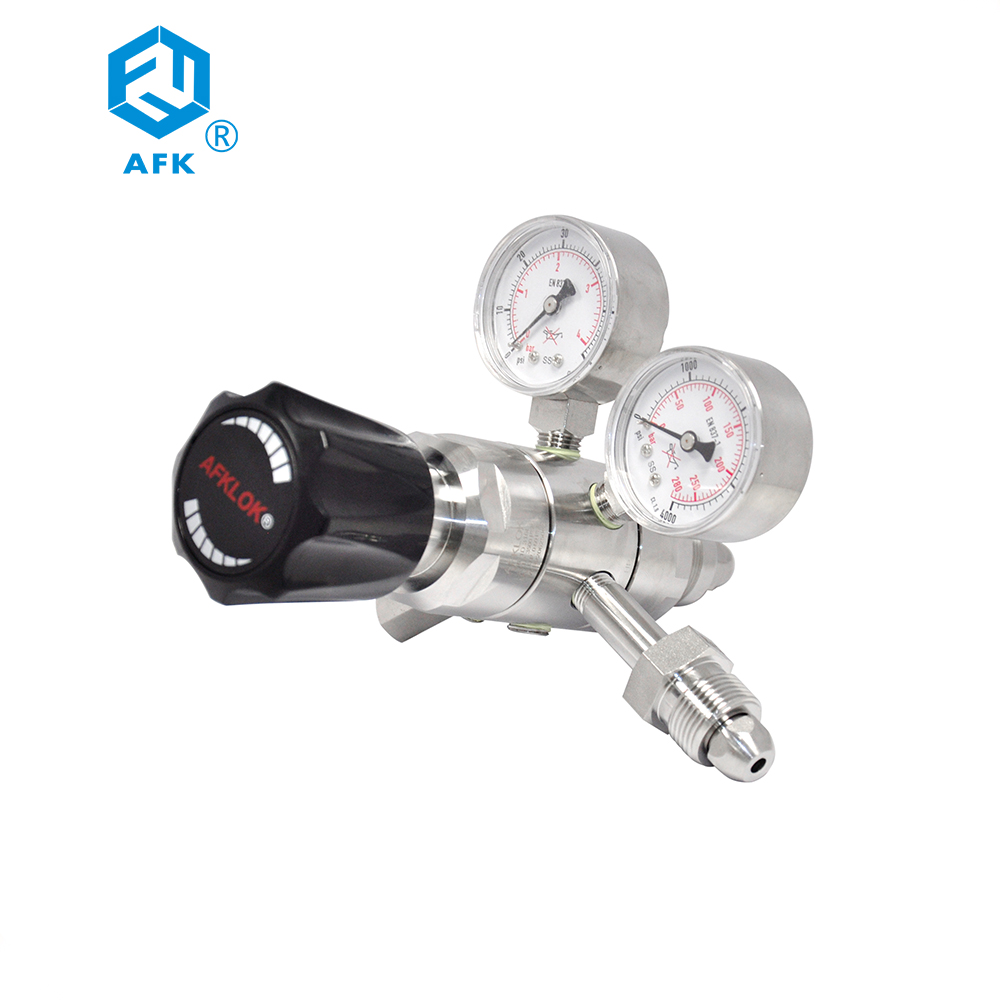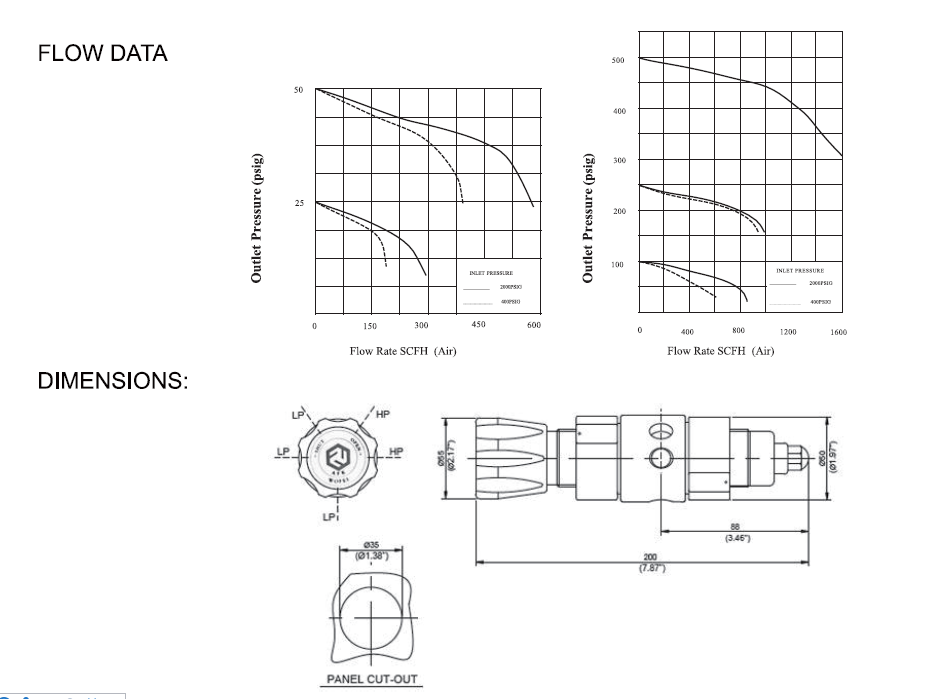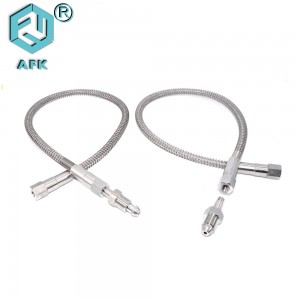High Pressure 316 Stainless Steel Cylinder Dual Stage Pressure Regulator 200bar CGA320 CGA540 CGA580
R31 Stainless Steel Cylinder Dual Stage Pressure Regulator
Characteristics of pressure reducer
The following factors need to be paid attention to when selecting the pressure reducer. Follow up the requirements of your specific use, and use this catalog to select the pressure reducer consistent with your parameters. Our standard is just the beginning of our service. We can modify or design control equipment to solve any problems in application.
R31 series stainless steel pressure reducers,double-stage diaphragm pressure reducing construction,stable output pressure,applied to high pure gas,standard gas,corrosive gas and so on.
Specification of R31 Stainless Steel Pressure Regulator
| 1 | Maximum Inlet Pressure | 500,3000psig |
| 2 | Outlet Pressure Ranges | 0~25, 0~50, 0~50,0~250,0~500psig |
| 3 | Safety test pressure | 1.5 times maximum inlet pressure |
| 4 | Operating Temperature | -40°F to +165°F / -40°c to 74°c |
| 5 | Leakage Rate Against Atmosphere | 2*10-8atm cc/sec he |
| 6 | Cv value | 0.06 |
Material of Nitrogen Regulator
| 1 | Maximum Inlet Pressure | 500,3000psig |
| 2 | Outlet Pressure Ranges | 0~25, 0~50, 0~50,0~250,0~500psig |
| 3 | Safety test pressure | 1.5 times maximum inlet pressure |
| 4 | Operating Temperature | -40°F to +165°F / -40°c to 74°c |
| 5 | Leakage Rate Against Atmosphere | 2*10-8atm cc/sec he |
| 6 | Cv value | 0.06 |
Design Feature
| 1 | Five hole designof body |
| 2 | Double-stage pressure-reducing structure |
| 3 | Metal-to-metal diaphragm seal |
| 4 | Body thread:Input and output connection 1/4″NPT(F) |
| 5 | Easy to clean internal structure |
| 6 | Fitter element installed internally |
| 7 | Panel mounting and wall mounting available |
| 8 | Optional outlet:Needle valve,diaphragm valve |
Typical Applications
| 1 | Labotary |
| 2 | Gas Chromatography |
| 3 | Gas laser |
| 4 | Gas bus-bar |
| 5 | Petro-chemical industry |
| 6 | Test equipment |
Ordering Information
|
R31 |
L |
B |
G |
G |
00 |
00 |
02 |
P |
|
Item |
Body Material |
Body Hole |
Inlet Pressure |
Outlet Pressure |
Pressure Guage |
Inlet size |
Outlet size |
Mark |
|
R31 |
L:316 |
M |
G:3000 psi |
G:0-250psig |
G:Mpa guage |
00:1/4 “NPT(F) |
00:1/4 “NPT(F) |
P:Panel mounting |
| B:Brass |
Q |
F:500 psi |
I:0-100psig |
P:Psig/Bar Guage |
00:1/4 “NPT(F) |
00:1/4 “NPT(F) |
R:With relief valve |
|
|
k:0-50psig |
W:No guage |
23:CGA330 |
10:1/8″ OD |
N:With Needle valve |
||||
|
L:0-25psig |
24:CGA350 |
11:1/4″ OD |
D:With diaphragm valve |
|||||
| Q:30″Hg Vac-30psig |
27:CGA580 |
12:3/8″ OD | ||||||
| S:30″Hg Vac-60psig |
28:CGA660 |
15:6mm OD | ||||||
| T:30″Hg Vac-100psig | 30:CGA590 | 16:8mm OD | ||||||
| U:30″Hg Vac-200psig | 52:G5/8-RH(F) | 74:M8X1-RH(M) | ||||||
| 63:W21.8-14(F) | ||||||||
| 64:W21.8-14LF(F) |
PCR laboratory planning sterile laboratory clean laboratory biosafety PCR laboratory construction program includes: building layout and decoration, air conditioning, water supply and drainage, gas supply, electrical design, centralized control, security, construction process, testing, training and many other aspects. However, at the same time, energy is often consumed in large quantities, and thus the requirements for ventilation control systems in PCR laboratories are getting higher and higher, from the early fixed air volume, bistable type, variable air volume systems, to the latest adaptive control systems a both safe , but also to meet the need to save energy.
Ventilation cabinet is one of the most commonly used local exhaust equipment in PCR laboratories, and his performance depends mainly on the speed of air movement through the ventilation cabinet. Factors affecting the frontal velocity and air movement are eddy currents, cabinet inlet shape, heat load, mechanical action, exhaust hole design and condensate barrier. In addition, it is also related to the performance of his fire resistance, corrosion resistance, ease of cleaning and the ability to collect certain contaminants before they enter the exhaust system. It is generally accepted that fume hoods in PCR laboratories should be able to accommodate flammable liquids and gases, and that the structural materials should have a fire resistance of several minutes to keep the fume hood intact and to seal the fire out in a timely manner.

